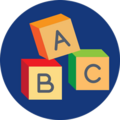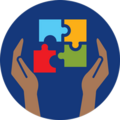Getting to the Core Podcastswith Wayne RESA
Where Pedagogy Meets Practice
A Podcast by Educators for Educators

Welcome to Wayne RESA's podcast page. Here you will find the current and past episodes, along with resources and transcripts for further exploration of the topics covered.
Latest Episode


Join us on Wednesday, December 10, 2025, 4pm ET
The Wisdom of the Elders and the Energy of the Young: A Cross Generational Dialogue
Season 6
Ron Walker, founder of COSEBOC (Coalition of School Educating Boys of Color) and author of Legacy of Leading, shares the powerful moments that shaped his 55-year journey in education—from seeing Emmett Till's photo as a nine-year-old to receiving a letter from his incarcerated former student. He discusses the urgent need for Black male educators who see themselves as liberators, the importance of rite of passage work to heal trauma, and why we must create a "conspiracy of care" that engages entire communities in supporting boys and young men of color.
In this powerful episode of Getting to the Core, the Wayne RESA SEED team shares transformative stories of courage, identity, and community through their Seeking Educational Equity and Diversity work. From the deeply personal “crossover” activity to building brave spaces for healing and dialogue, each educator reflects on how SEED fosters authentic belonging and systemic change. Ten years strong, SEED continues to cultivate a culture of accountability, empathy, and hope—one conversation at a time.
What happens when talented educators are stuck in limbo-teaching for years but unable to pass certification exams? Getting To the Core sits down with the innovators behind Wayne County's groundbreaking teacher certification program that's achieving success where traditional pathways have failed. Through a unique blend of content expertise, test preparation, and something most programs overlook entirely, WTCP is turning long-term substitutes into certified teachers and addressing the teacher shortage crisis one success story at a time.
Season 5
The "Getting to the Core of Wayne RESA" podcast features Dr. Jennifer Banks (Washtenaw), Yarisha Johnson (Oakland), and Cherron Ramsey (Wayne County), the trio behind Tri-County Culturally Responsive Mathematics, who have transformed a pandemic-era vision into a five-year movement serving nearly 850 students. These three educators are proving that culturally responsive pedagogy combines rigorous mathematics with meaningful, community-centered learning that empowers students to see themselves as mathematical thinkers and problem-solvers. Through summer institutes, leadership conferences, and student showcases featuring renowned speakers like Dr. Chris Emdin and Dr. Bettina Love, they're breaking the generational curse of "I'm not a math person" and replacing it with mathematical empowerment. Their collaborative approach across three Michigan counties demonstrates how educators can work together to create lasting systemic change that serves all students.
Dr. Aaron Johnson's interview examines how traditional education systems often fail to connect with the lived experiences of students, particularly young Black males, emphasizing the need for more culturally relevant teaching approaches. He advocates for educational environments that authentically value students' existing knowledge and identities rather than imposing disconnected academic standards. The discussion highlights the importance of teacher self-awareness, meaningful writing instruction, and empathy in creating effective learning spaces. Dr. Johnson underscores that while his research focuses on Black male students, these student-centered principles benefit all learners and require support from parents and communities.
Dr. Muhammad, a renowned educational consultant and author, focuses on his newest book, "The Way Forward," while also delving into the legacy of Professional Learning Communities (PLCs), the critical importance of equity, the current state of teacher well-being, and the potential dismantling of public education in the US.
This podcast episode delves into the origins, evolution, and impact of Wayne RESA's "Cultivating Genius" programs, focusing on culturally responsive instruction for Black children. It emphasizes the importance of addressing educator biases, understanding the holistic needs of Black students, and creating empowering and healing learning environments. The discussion honors the legacy of the late Ginni Winters, a key figure in the program's development, and highlights the personal and professional experiences of the speakers in shaping and implementing this vital work. The speakers emphasize the need to love on children and smile at them, letting them know that they are seen and that they matter.
Season 4
The Getting To The Core team collaborates with Leadership Consultant, Linda Kell to discuss why it’s important for our students to have their basic needs met in order to access higher order thinking skills author Dr. Bryan Pearlman.
Wayne State Professor of Educational Leadership and Policy Studies, Dr. Rema Reynolds Vassar joins our podcast team, Getting To The Core to discuss the current challenges of teaching and learning in urban communities today.
The Getting To The Core team sits down with Diversity and Equity Consultant, Dr. Jay Marks to discuss these essential elements to kick the year off successfully.
Chronic absenteeism is a widespread issue in schools and districts across the country. It has raised concerns about academic rigor, student behavior, and performance. In an interview with Getting To The Core, author Jessica Sprick discusses best practices that have been effective in addressing these concerns.
The Executive Director of BFDI Training Institute, Dr. Keisha Allen joins Getting To The Core to discuss the power of Restorative Practices from a facilitator’s perspective
The importance of attendance and behavior in student academic success has been well established. Research has shown that positive relationships play a significant role in improving attendance and reducing behavioral issues. As a result, many schools have embraced Restorative Practices, a field within the social sciences that focuses on strengthening relationships between individuals and building social connections within communities.
Season 3
As we recognize National Homeless Awareness Week this month we will be providing some information about the Special Populations Team at Wayne RESA, the McKinney-Vento Law, Homeless Awareness and why raising awareness on this subject is so important.
Today's content will be about continuous improvement. The State of Michigan has revamped our school and district planning to be more reflective, intuitive and responsive to the needs of staff and students.
Sometimes it’s easy to forget that “communication” encompasses so much more than language we speak, hear, or read. While language is one form of communication, humans communicate in numerous other ways with their body, eyes, hands, sounds, actions, and more.
In Social Studies, our core—the essence of what we do—is to develop informed and engaged citizens. We want students that not only have content or disciplinary knowledge of the world around them, but the skills of how to apply that knowledge and the desire to do so.
It’s not day care, it’s early learning. It's about providing quality, experience-based learning opportunities during the crucial, early developmental years of our children's lives.
Using the National Council of Teachers of Mathematics (NCTM.org) definition, Culturally Responsive Mathematics seeks to promote a positive mathematical identity in students by providing tasks that are relevant, personal and meaningful to students.
Season 2
“Talking is Teaching” is a community literacy campaign conceived by the Clinton Foundation’s Too Small to Fail Initiative. In 2018, Great Start Detroit/Wayne became the first “Talking is Teaching” site in Michigan. Since then, the movement has grown and expanded to dozens of community organizations.
Do you remember all the facts you learned in your history or geography classes? Does it still matter?
Since schools first shut down in the spring of 2020, our students have experienced things that none of us really imagined, from emergency remote teaching, social distancing, packets being sent home, Zoom classrooms, wearing masks, and an ever changing set of circumstances.
In this episode we discuss how the Ready to Launch program assists local districts and students (and their parents!) by accelerating students' exposure to career resources.
In this episode the group discusses the role of Arts Education in social emotional learning (SEL).
Discuss school culture and climate, and how the pandemic has brought to light issues that can occur when the culture and climate of a school is not conducive to learning.
Dr. Colbert's background, journey to Wayne RESA and her version for the county.
Season 1
A discussion about innovative learning strategies for summer learning that are no-tech, low-tech, and high-tech.
A discussion of the past school year, and what's on their wish list with respect to changes that they hope remain once the pandemic is behind us.
A discussion about how Wayne RESA's Attendance Resource Team (ART) uses research and data to help combat chronic absenteeism.
Creative ways to make connections with students in a remote environment.
The importance of feedback and assessment, and how educators can adapt current classroom practice to the remote environment.
A discussion regarding the challenges they face as both educators and parents in the current remote learning environment.
Subscribe to our Podcast
This podcast is also available on Apple Podcasts, Google Podcasts, and Spotify (search for "Wayne RESA").








